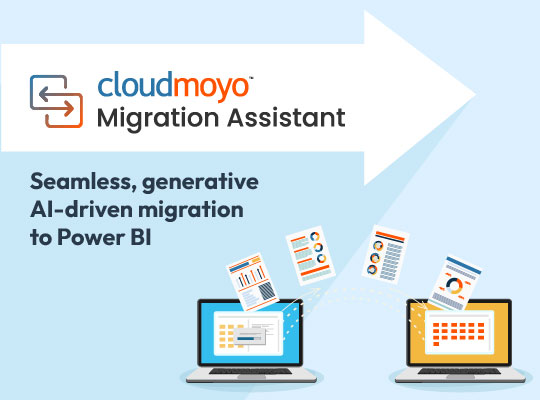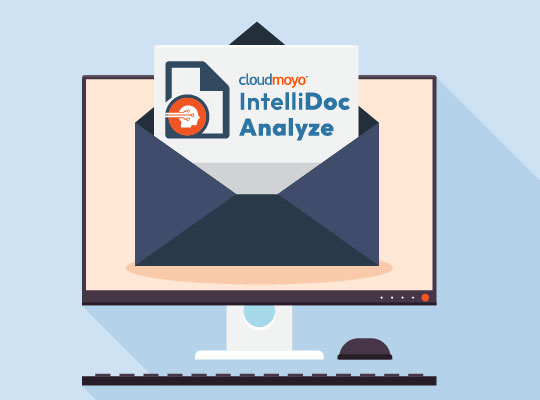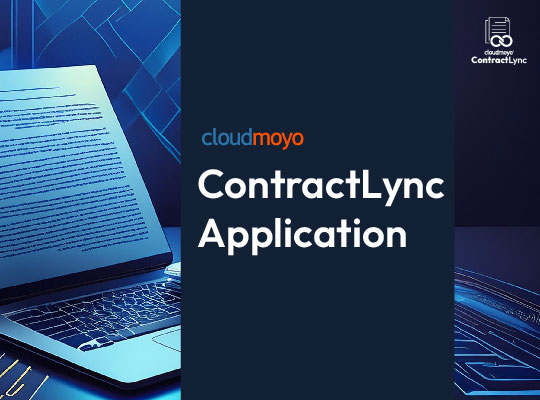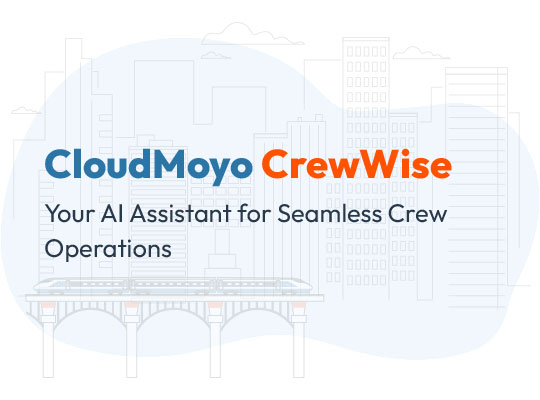Marc Benioff (Chair, Co-CEO, and Co-Founder of Salesforce) once said, “If someone asks me what cloud computing is, I try not to get bogged down with definitions. I tell them that, simply put, cloud computing is a better way to run your business.” Regardless of the size and the industry type, companies from all around the world are transitioning to the cloud. The reason is simple – the on-premises environment is traditional and has many inefficiencies. The hardware is more expensive and difficult to maintain. Now, how can the cloud solve this and what are the other reasons for its worldwide acceptance? To understand this, let’s go over the fundamental difference between the cloud and on-premises.
Fundamentals of the Cloud vs. On-Premises Environments
Every organization uses multiple applications to achieve day-to-day business objectives. Such applications are critical to organizations as they lie at the center of the core business. For example, a healthcare organization uses applications for patient bookings and practitioner availability, a department store uses billing applications to generate purchase bills and transactions, and a travel company uses applications to manage flight and stay bookings for their customers. The applications are used extensively throughout the life of the business. Keeping these applications up and consistently running in every region of the business is crucial.
On-Premises Environment
If an organization were to maintain its applications and data generated through its on-premises data centers, the organization would have to build and maintain its stack of physical space, power, internet, hardware, operating system, patches, frameworks, etc. This stack is called an IT stack. Maintaining an IT stack in the corporate location would result in maintenance costs, resource allocation, increased complexity, and less agility. Add to this list the trouble of maintaining both physical and virtual security.
Cloud
On the other hand, if an organization chooses to deploy its applications on the cloud, they’re essentially using the infrastructure of best-in-class Cloud Service Providers (CSPs) on a pay-per-use arrangement. This provides better elasticity, scalability, availability, and standard data security, eliminating the organization from allocating its resources to maintenance, security, and space.
Let’s take electric power as an analogy for the cloud versus on-premises (sometimes called on-prem). In the late 1800s, electricity for factories was pulled from power plants that were locally installed near each factory. However, in the early 1900s, larger power plants were installed to power larger electric grids to supply electricity to large regions. This resulted in the democratization of an important commodity and allowed factories to focus solely on manufacturing operations without having to worry about the source of energy.
Optimizing Human Resource Processes with the Cloud
Every business has an internal entity responsible for managing people – the human resources department. As part of their responsibilities, HR carries out multiple processes for an organization like hiring, recruiting, training, vetting employees, checking employment history, etc. HR uses various applications including Human Resource Management System (HRMS), Employee Onboarding apps, Performance Review apps, and more to carry out such processes. Deploying these applications on the cloud brings several benefits:
- Cutting Down Costs: As is the case with all applications, running HRMS apps on-prem would require the setup of an IT stack at the office location, training staff members, and making provisions to protect employee data. The cost in this case is higher. Subscribing to a cloud service would give a fixed monthly, quarterly, or annual cost depending on the payment plan – which is usually more affordable.
- Increased Mobility: Most companies have their corporate location in multiple regions. Moreover, ever since the outbreak of Covid-19, employees have been working from around the globe. Since quick access to data from the cloud only requires a strong internet connection, this makes it a viable choice for HR who frequently require access to personnel records like attendance, payroll, employee performance, employment history, etc. Cloud enables quick and disruption-free access. With the application on the cloud, one can leverage the speed and convenience of an on-premises app from anywhere.
- Quick Scalability: Even with the most data-driven predictions, it’s often difficult to anticipate the size of the team and subsequently, the load of data that will be flowing in. It’s wiser to use a system that’s flexible to provide resources as per demand. This way you don’t have to worry about the infrastructure’s flexibility and only pay for the resources you’re using.
- Quicker Turnaround Time for Processes: Following up on emails isn’t the most interesting thing to do. And who better than the HR department to vouch for that? Cloud helps deploy applications that can automate workflows easily. Cloud gives HR the ability to trigger workflows that can get work done faster and with less manual effort.
- Leverage Supreme Data Security Provisions: Most companies trust on-prem systems for protecting employee data. However, data security provided by well-known and reliable CSPs offers world-class security provisions. Most CSPs provide multi-layered security, including monitoring activities in the cloud, network security, internet security, user training, device protection, and quick recovery provisions. This approach involves protecting data from threats originating from all sources. The teams responsible for protecting the data are experts in cybersecurity with decades of experience.
Data Security in the Cloud
Even though most CSPs offer impenetrable data security, HR departments are hesitant to move employee data to the cloud because of the reservations they have about exporting data to a third party – a valid concern given the nature of the data. The importance of keeping employee data safe and secure cannot be overstated. This data is extremely personal and keeping it safe is the HR department’s highest priority. So which system is more capable of keeping such data safe? The answer isn’t that simple. Both systems are vulnerable to cyber threats. However, it’s important to explore the reality of data security in both on-prem and the cloud.
On-Premises Data Security
Having the entire cybersecurity infrastructure set up in-house makes companies feel that they have more control over data security. If the data collected is never shared with a third-party organization, then the chances of a data breach are reduced by default. However, the organization would be required to set up protocols for accessibility, install security patches, and allocate resources within their IT team that’s capable of fighting against hackers and cyberattacks. Since on-premises security has been around for quite some time, cybercriminals are more familiar with the technology used and find it easier to penetrate the systems.
Cloud Data Security
While outsourcing the objective of data security to the CSP’s remote location may seem risky, it can be a recommended choice if the CSP protects the data with industry-standard encryption, follows appropriate policies and processes, and uses the right technologies to protect the cloud environment from cyber-attacks. If you consider a reliable CSP like Microsoft, their security provisions include secure network infrastructure, secure hardware and firmware, and constant testing and monitoring of the entire infrastructure.
So, Cloud or On-Prem?
While deciding whether to transition to the cloud, it’s important to consider the cost involved with both systems. On-premises can be more cost-effective for small businesses that have an expert IT team dedicated to keeping servers up and running. However, for most businesses, even though the monthly fees associated with the cloud can seem high in the beginning, it’s more affordable once you factor in the cost of hardware maintenance and dedicated internal resources. Cloud gives a clearer picture of the associated upfront cost and better ROI in comparison to on-prem. This raises an important question for businesses still running their applications on-premises – why pay more for less?
And it’s not just the cost. Cloud vs on-premises isn’t a fair comparison. Cloud is the winner. Cloud’s ability to stretch resources per demand makes it more scalable. Its agile nature makes it more adaptive to changing customer needs. It has a simple structure of payment and is a cheaper option compared to on-premises. If you’re careful while selecting your Cloud Service Provider, you can leverage impeccable data security keeping you away from the risk of data breaches. If you work in the HR department, all these features can give you greater accessibility to employee data and a quicker turnaround time for various processes. While you’re working hard to create an efficient work environment at your organization, the cloud can be the deciding factor that your efforts need to make that happen. Cloud truly is “a better way to do business.”
Working with CloudMoyo
Even though the cloud has enormous potential to impact your business, transitioning to the cloud is a complex process for any organization. From choosing the right Cloud Service Provider to planning a long-term cloud roadmap, it can easily get overwhelming. CloudMoyo experts have 10+ years of experience in Azure application development. We’re a Microsoft Gold Certified Partner and utilize Azure cloud and data democratization expertise to help transform complex data landscapes and deliver actionable insights.
Founded in 2015, CloudMoyo is a US-based technology and services company that empowers its clients to transform with resilience and realize their digital strategies. CloudMoyo stands at the intersection of cloud and AI, with deep expertise in cloud migration, application development, data management, data analytics, and contract intelligence.
Connect with us today to get started on your cloud journey!





















